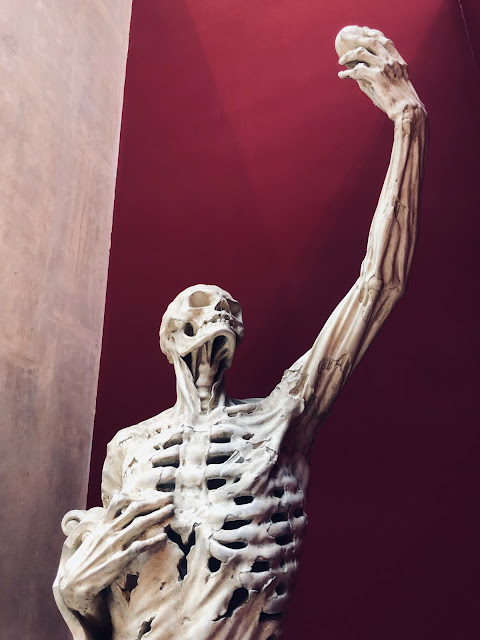All Hallows: le Transi de René de Chalon
 |
| Reproduction of Ligier Richer's "Transi de René de Chalon" (1547), La Cité de l’Architecture et du Patrimoine, 16th Arr. |
During the Renaissance period, transis--so-named because they showed the transition of mortal remains in the process of decomposition--became a fashion in burial art. One of the most evocative is the transi of René de Chalon, Prince of Orange, who was mortally wounded during the defense of Saint-Dizier (now part of the Haute-Marne department) in 1544, and who died soon after at age 25.
Rather than opt for a heroic memorial, the Prince requested to be represented as a cadaver, in the same manner as his father and uncle who held the title before him. Originally, the cadaver's left hand held aloft the Prince's desiccated heart. At the time, burying nobles' body parts in separate places was a common practice, to better distribute the great person's glory. However, at some point, the heart went missing. The theft was blamed on that traditional scourge of French Catholic nobility, the Revolution.
While I have not yet visited René de Chalon's memorial in eastern France, the museum La Cité de l’Architecture et du Patrimoine (City of Architecture and Heritage) in Paris has helpfully cast an exact replica from the original. Bringing full-scale casts of France's far-flung architectural heritage to Parisiens is only one of La Cité's cultural contributions. The museum houses several of Eugène Viollet-Le-Duc's statues of the Twelve Apostles (1859) that had been removed from the spire of Notre-Dame-de-Paris just days before the cathedral caught fire on April 15, 2019.
La Cité may be the only place to see these statues before they return to the rebuilt spire in December 2024, hoisted hundreds of feet above the streets and locked away forever behind a permanent, impenetrable wall of tourists.



Comments
Post a Comment